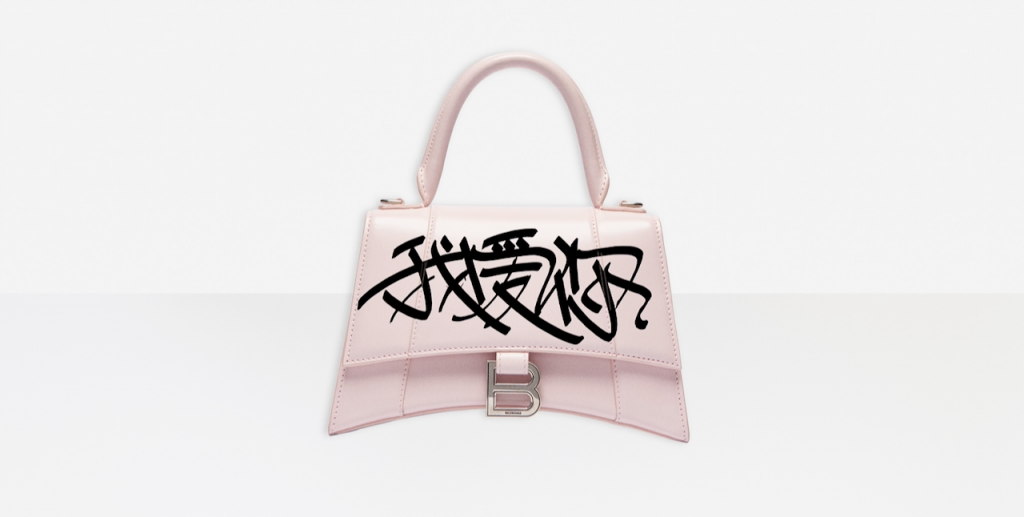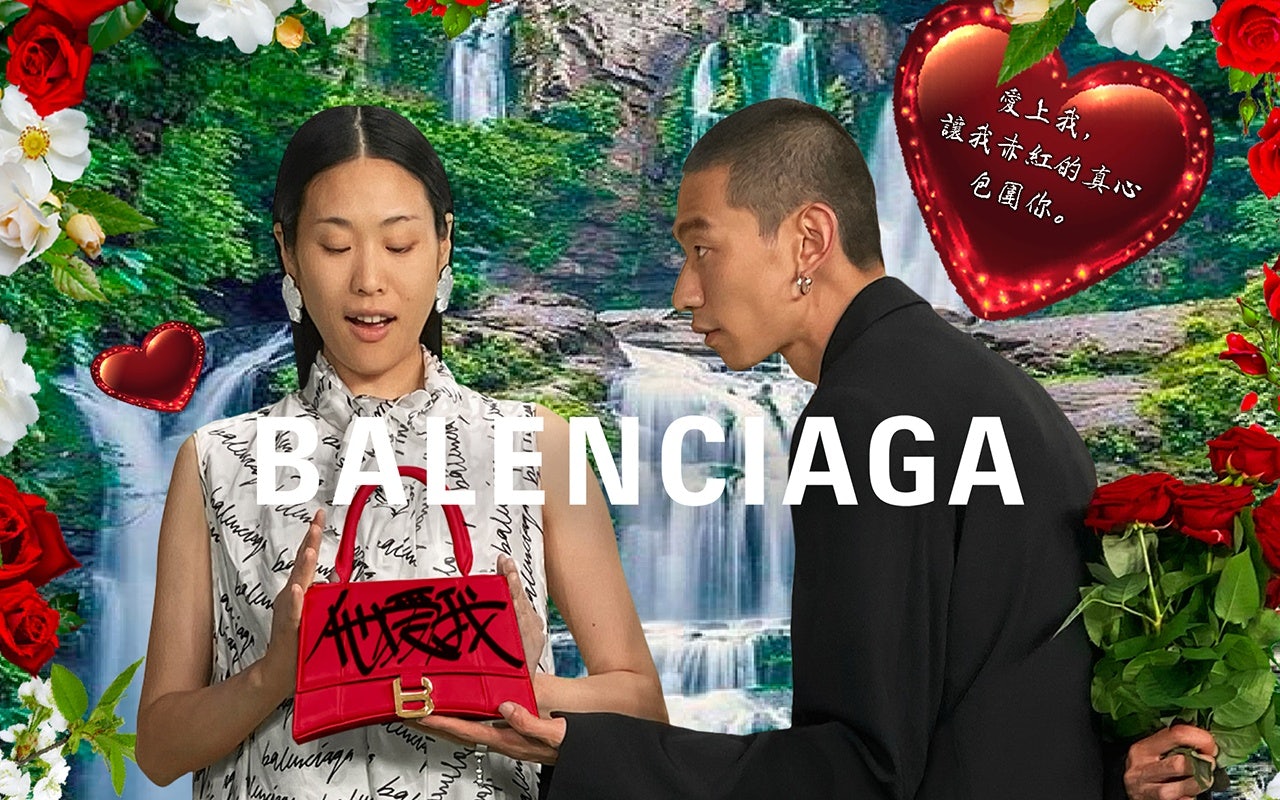What happened
For Qixi (China’s version of Valentine’s Day), Balenciaga has released four limited-edition Hourglass handbags at the brand’s Tmall flagship store. In its campaign picture, a male model is giving a red Hourglass handbag with Chinese characters that read “He Loves Me” written on the flap to a female model, who looks at the present with awe. They two are standing before a waterfall backdrop that’s flanked by red roses and hearts.
The campaign’s four bags, which come in red, black, pink, and white with specially-designed graffiti fonts, exemplify the current “Too Cool” style favored by certain Gen-Zers but seen as offensive by the rest of the internet. The bags mimic styles preferred by China’s rural population and have been labeled “tasteless” or even “insulting of Chinese culture” by many netizens while some are saying they’re “simply ugly.”
By the end of Tuesday in China, the topic #BalenciagaChineseValentineCampaignTasteless (#巴黎世家七夕广告 土) had garnered over 210,000 discussions and 170 million views on Weibo, and the topic #BalenciagaInsultsChina ((#巴黎世家辱华) had over 15 million views and more than 6,000 discussions.

Jing Take:#
Chinese netizens are known for finding certain things offensive: sovereignty issues over Hong Kong, Macau, Tibet, or Taiwan (Versace, Marc Jacobs, Coach) as well as implicit racial prejudices or racism (Dolce & Gabbana, Philipp Plein). But to some, even seemingly minor details like natural freckles on a Chinese model’s face (Zara) and the aesthetic of this campaign cross the line.
With Chinese patriotism at an all-time high thanks to intensifying tensions between China and the West, and anti-consumerist voices growing louder in a recovering post-COVID-19 economy, luxury brands have become easy targets for netizens. While the campaign pictures have been widely distributed on Weibo and WeChat, the brand only posted them on Tmall, indicating that they were likely only meant for a particular audience and not the whole internet.
To stand out in a sea of Qixi campaigns, Balenciaga made a commendable effort to learn what Chinese Gen-Zers find cool and designed a unique font for the handbags instead of simply using an existing one like Dior did with its customizable Book Tote. Yet, many people still think the brand hasn’t done its homework. While it’s important for brands to do social listening and understand other brands’ cultural missteps, sometimes it’s better to ignore the noise. After all, a luxury brand wasn’t born to be led by public opinion — its job is to set trends.
The Jing Take reports on a piece of the leading news and presents our editorial team’s analysis of the key implications for the luxury industry. In the recurring column, we analyze everything from product drops and mergers to heated debate sprouting on Chinese social media.
